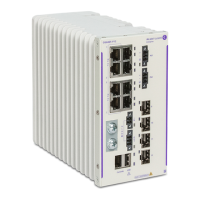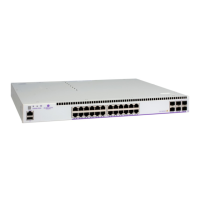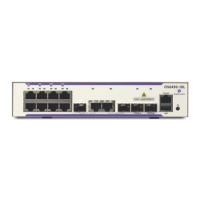VPLS Features
Page 260 7210 SAS M Services Guide
Local and Remote Aging Timers
Like a Layer 2 switch, learned MACs within a VPLS instance can be aged out if no packets are
sourced from the MAC address for a specified period of time (the aging time). In each VPLS
service instance, there are independent aging timers for locally learned MAC and remotely learned
MAC entries in the forwarding database (FIB). A local MAC address is a MAC address associated
with a SAP because it ingressed on a SAP. A remote MAC address is a MAC address received by
an SDP from another router for the VPLS instance. The local-age timer for the VPLS instance
specifies the aging time for locally learned MAC addresses, and the remote-age timer specifies the
aging time for remotely learned MAC addresses.
In general, the remote-age timer is set to a longer period than the local-age timer to reduce the
amount of flooding required for destination unknown MAC addresses. The aging mechanism is
considered a low priority process. In most situations, the aging out of MAC addresses can happen
in within tens of seconds beyond the age time. To minimize overhead, local MAC addresses on a
LAG port and remote MAC addresses, in some circumstances, can take up to two times their
respective age timer to be aged out.
Disable MAC Aging
The MAC aging timers can be disabled which will prevent any learned MAC entries from being
aged out of the FIB. When aging is disabled, it is still possible to manually delete or flush learned
MAC entries. Aging can be disabled for learned MAC addresses on a SAP or a spoke SDP of a
VPLS service instance.
Disable MAC Learning
When MAC learning is disabled for a service, new source MAC addresses are not entered in the
VPLS FIB. MAC learning can be disabled for individual SAPs or spoke SDPs.
Unknown MAC Discard
Unknown MAC discard is a feature which discards all packets ingressing the service where the
destination MAC address is not in the FIB. The normal behavior is to flood these packets to all end
points in the service.
Unknown MAC discard can be used with the disable MAC learning and disable MAC aging
options to create a fixed set of MAC addresses allowed to ingress and traverse the service.

